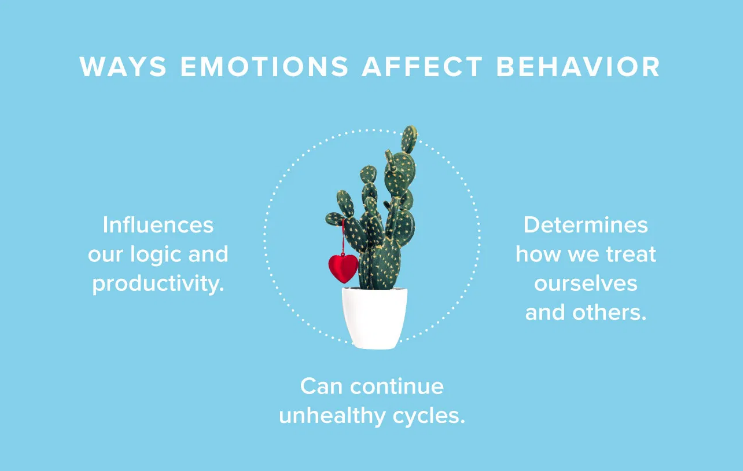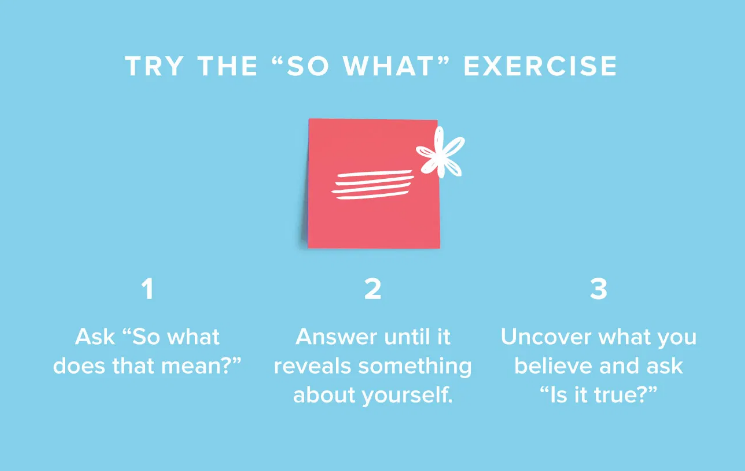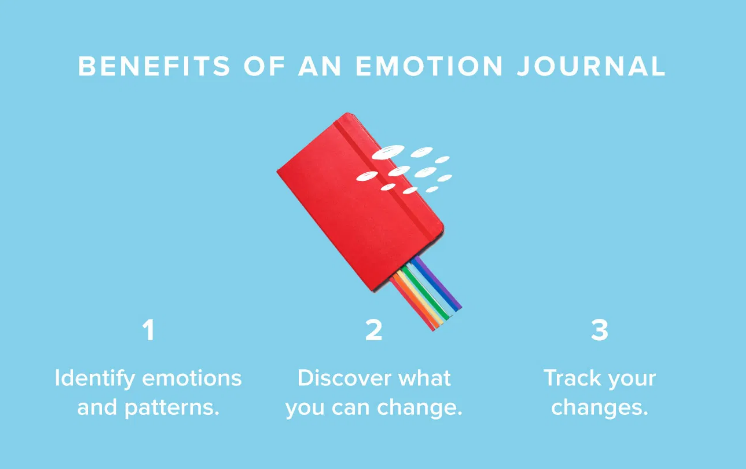Guide to Man Your Feelings
March 24, 2021/ Pause Factory Admin / Emotional Intelligence, Personal Development / 0 comments
Benefits | Identify your feelings | Find a pattern | Recognize negativity | Write your way to change | When to seek professional help
Take stock of your emotions to thrive
Rarely do our feelings hang neatly on fancy, perfectly spaced hangers. Instead — like our closets — we often hold a jumble of both new and outdated emotions.
But you can organize your feelings and deal with or discard ones that aren’t serving you, a la Marie Kondo. Sift through your emotions regularly to slay anxiety, stress, or frustration.
Here’s how to optimize your feelings to start winning at life.
How our emotions affect our behavior

If we don’t take stock of our emotions or why we’re feeling them, they’ll likely continue to stuff our minds — even when they’re not necessary. That could have negative consequences for our success, health, and relationships.
If you’ve ever ran a red light while thinking about that fight you had with your significant other, you’re not alone. Studies show that our emotions can affect our logic and our ability to perform tasks.
When we’re anxious or stressed, we’re also more likely to self-medicate with alcohol, drugs, or junk food. These all can make us feel like crap when the numbing effects wear off.
Plus, studies show that the more emotionally intelligent we are, the better our romantic relationships will be — and that can likely be said for friendships and connections with family, too. And we know how important that inner circle or tribe is to our well-being.
Organizing your feelings involves a light version of cognitive behavioral therapy (CBT) that you can do on your own or with the help of a therapist. It can really help you grow as a person.
“Skipping over the nuts and bolts of CBT, the basic premise is that our thoughts influence our feelings, which then influence our actions,” says Carolyn Robistow, a licensed professional counselor and founder of The Joy Effect counseling in The Woodlands, Texas.
“An unhealthy thought, or being stuck in an unhealthy thought pattern, can lead to actions that just make the problem worse or keep us stuck in the same types of situations, basically spinning our wheels.”
The first step to organizing your feelings is to list your problems or worries.
That might sound like a negative thing to do, but sometimes just writing them down will ease anxiety, says a University of Chicago study.
“Identifying the underlying thought or belief, evaluating it for its helpfulness and truth, and then changing it if it’s not serving us well can be incredibly powerful,” Robistow explains.
How to identify the core emotion that’s upsetting you

List your concerns or problems and assign the emotions, thoughts, and beliefs attached. If you’re unsure what those thoughts are, Robistow recommends a “So what does that mean?” exercise.
The “So what” exercise example:
Problem: Everyone expects me to rearrange my schedule to fit theirs.
Feelings or emotions: anger, resentment, hurt
Ask
Answer (to find your underlying belief)
So what?
So they think what they have going on is more important than what I have going on.
So what?
So that’s selfish of them to not even think about how this inconveniences me.
So what?
So if I want to see them or be part of the event, I just have to suck it up.
So what does that mean?
It means that if I don’t make the effort, I’ll never get to spend time with them…
Possible conclusion: …which means that I’ll be all alone, and they’ll eventually forget about me. I’m afraid I’m forgettable, or they don’t care about me.
The meaning we uncover in the exercise might feel brutal. But that’s when the true work of CBT, or organizing your feelings, comes into play.
“Look for exceptions,” Robistow says. “Ask yourself, ‘Is that really true? Or can I find evidence that contradicts that belief?’”
In the example provided, the person might think of times when others have gone out of their way to see them or expressed having a blast after hanging out. They’ll know that the conclusion they arrived at is false.
Sometimes you have to decide if a feeling is necessary or if it’s just operating a gaming controller in your brain.
Remember, our emotions drive our behavior. We should check in with our emotions often because they can quickly become exaggerated. This eventually creates barriers to the goals we want to achieve and the people we want to be close to.
If you’re feeling negative, you could be experiencing a cognitive distortion. In short, that’s your brain telling you a lie based on old thought patterns.
IS YOUR MIND LYING TO YOU?
If you’re nervous about the date you’re on, for example, you might drink too much. But maybe you’re basing your nerves off a previous bad date. This could cause a chain reaction of anxiety-filled dates, leading you to think that you need to be tipsy to be a good date (or that nobody is interested in you sober).
If we’re aware of the reasons behind our actions — and have a better understanding of our emotions — we can change our patterns. We can stop stress, worry, or frustration from taking over and making us behave in a way we’d like to avoid.
Step three: Watch out for these common distortions
Here are common thought patterns that can negatively affect how we approach situations:

Create lasting behavioral changes and make them stick
Recognizing distorted thinking or a behavior pattern that’s messing with your life is the first step. Once you recognize it, it’s easier to do the work you need to replace it. It may be harder than swapping out a ratty old hoodie, but the mindfulness you build could be the most comfortable change ever.
“Write down the action you want to change, then work backward to determine what triggered it,” says Lauren Rigney, a Manhattan-based mental health counselor and coach. “Once you learn your triggers, you will have a better chance to intervene and change the thought or behavior.”

Rigney recommends making a journal ritual to stay motivated.
“If you are a morning person, take 10 minutes each morning to recap your progress,” she says. “If you wrote down a situation the day before, take this time to complete the journal. If you are a night owl, that would be a good time to work it into your schedule.”
QUESTIONS TO HELP YOU KEEP TRACK
- What happened?
- What was the trigger or event?
- What emotion did you feel?
- What were your exact thoughts?
- How did you react?
- Could you, your thoughts, or your behaviors have been different? (Weigh the facts of the situation from a calmer mindset, and determine what was unhealthy for you.)
- How can you create new thoughts or behaviors for the future?
You can even do it on the go with an app. Search “CBT diary” or “thought journal,” in your app store, Rigney suggests.
If you try at-home techniques and grow frustrated with the process, or you’re facing an urgent situation, don’t hesitate to seek help from a licensed mental health professional.
“Many issues that we believe are simple are actually quite complicated and confusing,” Rigney says. “If you are having difficulty, it is because making these changes is difficult. That is why professionals are around. Getting help to change unwanted patterns can be very rewarding.”
You should seek help immediately if you feel your thoughts or behaviors are destructive or dangerous to yourself or others. If you or someone you know is contemplating suicide, help is out there. Reach out to us at Pause Factory via 08096303933
Remember that organizing your feelings isn’t a tool intended to invalidate your emotions. It’s a way to be more mindful of why you’re experiencing them and alert you to any potential roadblocks.
“We all have many unique emotions that, even if they are big and bold, do not cause us problems with ourselves or others,” Rigney says. “These emotions do not need a big rework.” In keeping with our closet analogy, if you’ve got a nice dose of calm, joy, or confidence hanging in your mind, think of that as some classic denim you’ll want to hold onto.
Written by Jennifer Chesak and edited by Teslim Folorunsho

